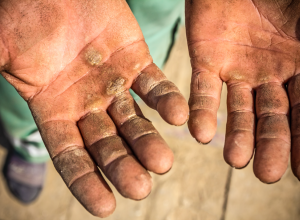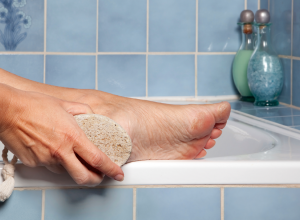
Hyperkeratosis
Hyperkeratosis is an abnormal thickening of the outer layer of skin (epidermis). The growth, which contains a protein called keratin, is often the body’s form of self-protection against pressure, rubbing and other irritation. Calluses and corns are forms of hyperkeratosis.
Causes
In addition to friction, rubbing and pressure, hyperkeratosis can appear as a response to infection, chemicals, sun exposure and ongoing inflammation.
Types
There are many different types of hyperkeratosis. Calluses and corns are considered to be hyperkeratoses, as are warts, actinic keratoses (sandpaper-like spots of skin caused by sun radiation), seborrheic keratoses (noncancerous tan, brown or black skin growths), eczema, and lichen planus (white patches inside the mouth).
Treatment
The duration of hyperkeratosis and the treatment used to get rid of it depends on the type of hyperkeratosis present. Usually corns and calluses can be treated by eliminating poorly fitting shoes, soaking the feet in warm water and using a pumice stone to slough off the thickened skin. Plantar warts can be treated with over-the-counter medications, or a podiatrist or health care provider may recommend using laser techniques or freezing to eliminate the painful bumps.
Notice concerning medical entries:
Articles having medical content shall serve exclusively for the purpose of general information. Such articles are not suitable for any (self-) diagnosis and treatment of individual illnesses and medical indications. In particular, they cannot substitute for the examination, advice, or treatment by a licensed physician or pharmacist. No replies to any individual questions shall be effected through the articles.







